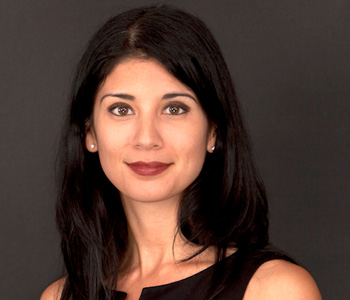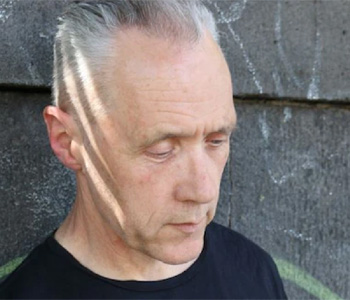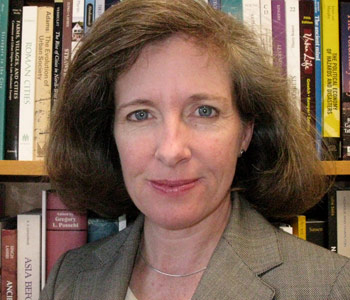Shirley Anne Warshaw
The Co-Presidency of Bush and Cheney
Stanford University Press
320 pages, 9 x 6 inches
ISBN 978 0804758185
The Co-Presidency of Bush and Cheney explores the extraordinary depth of Cheney’s influence in the Bush administration – and how Cheney built that influence.
Cheney’s role was so pervasive in policy development that he was, in fact, a co-president. I struggled with alternatives for a title, considered titling the book Hijacked or Stolen Power. But the reality is that Bush willingly allowed Cheney to control a wide range of policy areas — as long as Cheney did not intrude on the faith-based or education policies that were the core of the minimalist Bush agenda.
To most observers of the Bush administration, Vice President Dick Cheney’s legacy was centered in foreign policy. But, as it turns out, Cheney had his hand in almost every area of domestic policy. And, equally as important, it was Cheney who built the legal team that asserted the president’s claims of constitutional authority. Decisions involving detainee imprisonment, wireless surveillance, and harsh interrogation practices were framed by Cheney’s hand-picked lawyers and around Cheney’s interpretation of constitutional power. Cheney and his chief counsel, David Addington, built the legal teams in the Office of Legal Counsel in the Department of Justice, in the White House Counsel’s office, and in the Department of Defense. But this is only part of the story.
Quite simply, Cheney gained power because George W. Bush was focused on building a moral and civil society with the resources of the federal government. For Bush, the presidency meant building a moral and civil society centered on ensuring that faith based organizations were funded, that the federal government never supported abortion or violated human life with embryonic stem cell research, that abstinence education and committed heterosexual relationships became the centerpiece of a high school sex-education curriculum, and that freedom of religion became a core value in foreign policy. Bush had little interest in all else – for everything else, he had Dick Cheney.
The narrow focus of the Bush agenda led to the co-presidency, in which Cheney controlled economic, environmental, and energy policy in addition to national security policy. In contrast to the faith-based presidency of Bush, Cheney oversaw a business-friendly presidency intent on deregulation and slashing the federal workforce with-according to Cheney- its intrusive oversight. Cheney’s expansive role in economic policy led, for example, to a plan to outsource fifty percent of the federal workforce as part of what was known as the President’s Management Agenda. By controlling the transition, Cheney placed business-centered executives across the administration – many of whom were energy executives – to cut bureaucratic staffs and terminate regulations which the business community considered too costly.

Cheney gained power <em id="">because</em> George W. Bush was focused on building a moral and civil society with the resources of the federal government. Lest anyone wonder <em id="">how</em> Cheney gained power, it was first and foremost his ability to staff the administration.
The Co-Presidency of Bush and Cheney opens a new door into understanding the dynamics between the president’s office and the vice president’s office. Material for the book was gathered over three years, in which I interviewed senior staff from the Bush/Cheney campaign of 2000, from the White House, and from the executive departments. One of the most revealing pieces of information emerged during interviews with White House staff. The staff revealed that during the transition Cheney created what was called “the single executive office,” in which the president’s staff and the vice president’s staff were considered a single office.
In this staffing structure, memos initiated in the White House were also routed through the vice president’s office. All meetings in the White House, both among staff and with non-staff, were open to the vice president’s staff. When the president’s chief of staff held a senior staff meeting, two of the vice president’s staff attended. Cheney built his staff to mirror the White House staff, having aides with the same titles and same portfolio as those in the White House. Thus, when the national security staff held a meeting, Cheney sent several of his staff. Conversely, if Karen Hughes, the communications director in the White House, needed a speechwriter for a project, she could pull from Cheney’s staff.
The intertwining of staffs allowed Cheney access to all information available to Bush and, perhaps more importantly, it allowed Cheney to set a course for his policy involvement in which Bush was far less interested.
Not until the terrorist attacks of September 11, 2001, did Bush and Cheney join forces in one policy arena – national security. They both were comfortable using military might to defeat terrorists far from America’s shores. Cheney’s wealth of foreign policy experience, from his years as Gerald Ford’s chief of staff, to his ten years on the House Intelligence Committee, to his tenure as Secretary of Defense, gave him instant credibility with Bush. Bush’s foreign policy experience was limited to conversations with Mexico’s president on immigration issues while he was governor of Texas.
Bush’s views on the newly designated war on terror were reinforced by long-time friends of Cheney – whom he had placed in their jobs – Donald Rumsfeld, Paul Wolfowitz, Douglas Feith, Stephen Cambone, John Bolton and others.
Unfortunately for Bush, the reality that these interwoven friendships, many of which were decades long, brought to the table was a single-minded view of American foreign policy. Cheney kept Bush from hearing multiple views – the views that Bush heard on national security were dominated by Cheney loyalists. Condoleezza Rice, not a Cheney ally, kept out of the policy process – choosing to let Cheney allies control the process. When Secretary of State Colin Powell offered a different perspective, he was easily marginalized by the uniform voices of the Cheney allies.
Why is this story of staffing important? Because few know exactly how Cheney was able to dominate the policy process, particularly in national security matters. When Bush handed Cheney the role of transition director, he handed Cheney control of staffing the new administration. And Cheney used that power to place his own loyalists across the administration. Those loyalists shared Cheney’s views of presidential power and national security. Lest anyone wonder how Cheney gained power, it was first and foremost his ability to staff the administration.
In the past month or so, we have seen former Vice President Cheney aggressively respond to charges by President Obama that the Bush administration exacerbated America’s friends and foes with its policies of torture, prisoner abuse, and inadequate trials. In fact, Dick Cheney is the one to be blamed for these. It was not only Cheney’s policies that became the policies of the Bush administration, but they survived legal tests within the administration because of the legal team that Cheney put in place.
Lawyers in the Office of Legal Counsel within the Department of Justice and in the White House Counsel’s Office provided the constitutional justification for Bush to move forward these policies. They were lawyers that Cheney and his staff placed there. Each shared Cheney’s view that the president had essentially unlimited authority under Article II of the Constitution to do what he felt was necessary to protect and defend the nation. Unlimited authority – neither prohibitions by statute nor international treaty could restrict the president’s constitutional authority to protect and defend under this interpretation. Within the administration, Secretary of State Colin Powell and his staff, including his legal counsel, William Taft IV, were among the few who objected. Their views were quickly dismissed by Cheney. It is questionable whether Bush even heard the full range of their objections.
Clearly, Cheney controlled the debate over whether or not to proceed into Afghanistan and Iraq and he controlled the debate over how the wars were prosecuted. He controlled the debate by controlling the participants in the debate – nearly all of whom he had placed there. Bush, to his great fault, never reached out to a larger audience and never sought multiple voices in the policy debate. His was an administration dominated by the group think of Cheney’s allies. Had Bush spent the time to seek outside legal, constitutional, and national security voices, surely the national response to the terrorist attacks of September 11th would have been quite different.
But Cheney’s voice in the administration ran far deeper than national security policy. Upon taking office in 2001, Cheney’s primary goal was to build a pro-business administration which moved toward deregulation. For Cheney, the financial costs imposed by federal regulation were an unwarranted and unnecessary constraint on business and industry.
During the transition, Cheney staffed the administration with pro-business executives and lobbyists whose only goal was to dismantle the regulatory constraints, particularly environmental constraints on energy producers. Placing an oil and gas lawyer from Texas as head of the Consumer Products Safety Commission was only the tip of the iceberg of Cheney’s anti-regulatory appointees.
Oil and gas companies successfully permeated the senior halls of government as Cheney appointees and focused on removing environmental regulations that prohibited drilling on federal lands, such as the Arctic National Wildlife Reserve in Alaska and the coastal shelves off of Southern California and Florida. Similarly, coal company executives appointed by Cheney dismissed environmental regulations requiring removal of waste materials in mountain coal mining, thus leading to significant pollution of the stream water surrounding the mines.
Cheney shaped the Bush administration’s energy, environmental, pro-business, and national security policies. Not surprisingly, Cheney’s pick for chairman of the president’s Council of Environmental Quality, housed in the White House, was a lawyer, James Connaughton, who specialized in defending General Electric against paying for Superfund cleanup. Connaughton then chose as his deputy the chief lobbyist from the American Petroleum Institute, Philip Cooney. This was a pattern repeated across the administration. To head the Forest Service, Cheney brought in a logging executive. To head the Office of Information and Regulatory Affairs within the Office of Management and Budget, Cheney brought in a cost-benefit analysis expert who consistently argued that government had to weigh the cost to business of a public policy decision. A limited health risk did not justify the added costs to business imposed by added regulations, he argued. And then there were the pro-business efforts to outsource fifty percent of the federal government. This, of course, had the added benefit of reducing the institutional memory of career employees and of minimizing congressional oversight of administration activities – both of which Cheney championed.

Cheney oversaw a business-friendly presidency intent on deregulation and slashing the federal workforce with-according to Cheney- its intrusive oversight.
The co-presidency of Bush and Cheney was based on a division of labor, with Bush focused on the faith-based presidency and Cheney on most else.
Bush built his presidency on creating a moral and civil society, words which he frequently used in describing the central goal of his administration. At the heart of his moral and civil society was ensuring that children had quality education – hence his promotion of the “No Child Left Behind” bill – and that the faith-based organizations, particularly churches, be central to federal delivery of social services. As an evangelical Christian, Bush was deeply engaged in using his religious tenets to serve as the tenets of public policy in building a moral and civil society. He prohibited federal funding for stem cell research, abortion and abortion counseling and ensured federal funding for abstinence education in public high schools, religious counseling for troubled teens and for prisoners, and used religious litmus tests in federal hiring.
While Bush focused on his limited agenda of a faith-based government, Cheney essentially focused on everything else. Cheney’s control of the hiring process during the transition allowed him to build the government that protected an anti-regulatory business-oriented government. But Cheney’s legacy was even more substantial, for it was Cheney who crafted the imperial presidency that allowed Bush to determine the constitutionality of laws (addressed through signing statements). And it was Cheney appointees that allowed Bush to move forward a view that the president had almost unlimited constitutional power to protect and defend the nation in any way he believed was necessary – including the use of torture.
I hope that The Co-Presidency of Bush and Cheney sheds new light on the limited agenda that George W. Bush had as president and the far larger agenda that Dick Cheney had as vice president – as well as the tools Cheney employed to move that agenda forward. To some extent Bush was a willing partner in the co-presidency. However, I doubt that Bush fully understood the degree to which Cheney stacked the administration with his own loyalists, particularly the positions in key legal offices. Without the legal decisions rendered by Cheney’s appointees, Bush would not have pursued the aggressive national security positions that Cheney championed.




We don't put paywalls. We don't distract you with ads. We don't sell your data.
Please help to keep this running!